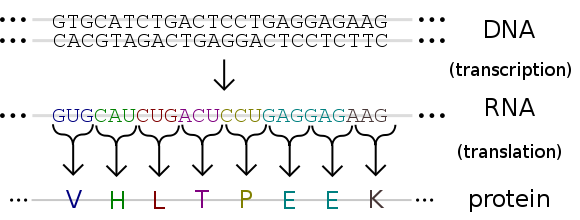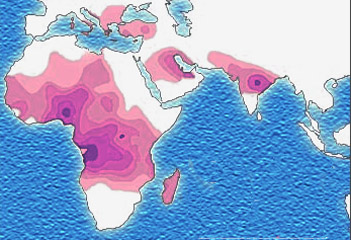Genetics and hetrozygous advantage
Genetics of Sickle Cell Anaemia:
Sickle Cell Anaemia is an Autosomal recessive disorder caused by a point mutation in the HBB (Haemoglobin beta gene) gene which codes for the beta chains of Haemoglobin and is located on Chromosome 11p15.5. The mutation is a substitution of Valine for Glutamic acid at the sixth amino acid position.

The presence of two defective genes (SS) is needed to develop the disorder.
The HBB gene encodes for Beta Haemoglobin and a mutation in the gene produces an abnormal form of Haemoglobin called HbS (Haemoglobin S). Over 475 β-globin gene variants exist, and several result in life-threatening illness.
If the mutation is heterozygous, meaning an abnormal allele (S) and a normal allele (A), the host is a carrier of Sickle Cell Anaemia and has Sickle Cell trait.
Sickle Cell trait:
As the person has only one Sickle allele the phenotype is mild. Blood cells are not sickled in normal resting conditions but when blood oxygen levels decrease mild reversible sickling occurs in venous blood (1%). This sickling however reverses in seconds so cannot be involved in clots or ruptures. Although some complications do arise when the cells are exposed to conditions that promote sickling such as high altitude or prolonged exercise, these conditions mimic those with full Sickle Cell Anaemia. Sickle cell trait also worsens the complications seen in Diabetes Mellitus Type 2.
Sickle Cell trait shows a perfect example of heterozygous advantage. This is where a carrier of a certain disease shows a higher relative fitness than the homozygote or wild type. Sickle Cell trait conveys advantage against Malaria.
Malaria is a vector-bourne infectious disease caused by the Protozoan parasite Plasmodium usually carried by the female Anopheles Mosquito. After taking a blood meal from a Malaria sufferer the plasmodium reproduces inside the blood cells, and then a week later the mosquito passes on the plasmodium when it drinks from its next host.
Individuals with Sickle Cell trait have a 60% protection of mortality from Malaria.
The exact reason for Sickle Cell trait protection from Malaria is unknown but many proposals have been put forward.
As the sickled cells deform when oxygen levels, and parasite is incubated inside cells, this lowers oxygen levels inside and this sickles the cells and marks them for degradation.
It has been that cells infected with plasmodium parasites sickle much more readily than uninfected cells.
Other investigations suggest that oxygen radical formation in sickle trait erythrocytes retards growth and even kills the Plasmodium parasite. Sickle trait red cells produce higher levels of the superoxide anion (O2-) and hydrogen peroxide (H2O2) than do normal erythrocytes. Each compound is toxic to a number of pathogens, including malarial parasites.
This is the reason for the prevalence in Africa and other Malaria prone regions. Individuals Homozygous for Sickle Cell Anaemia die from the related health conditions.
Normal individuals with no abnormal haemoglobin genes die from Malaria.
Whereas the people with Sickle Cell trait generally live longer as they have a reduced risk of Malaria and do not have many problems from the Sickle Cell trait.
Below is a map showing the highest prevalence of Sickle Cell Anaemia:

For more information of Malaria go to https://www.umm.edu/ency/article/000621.htm
